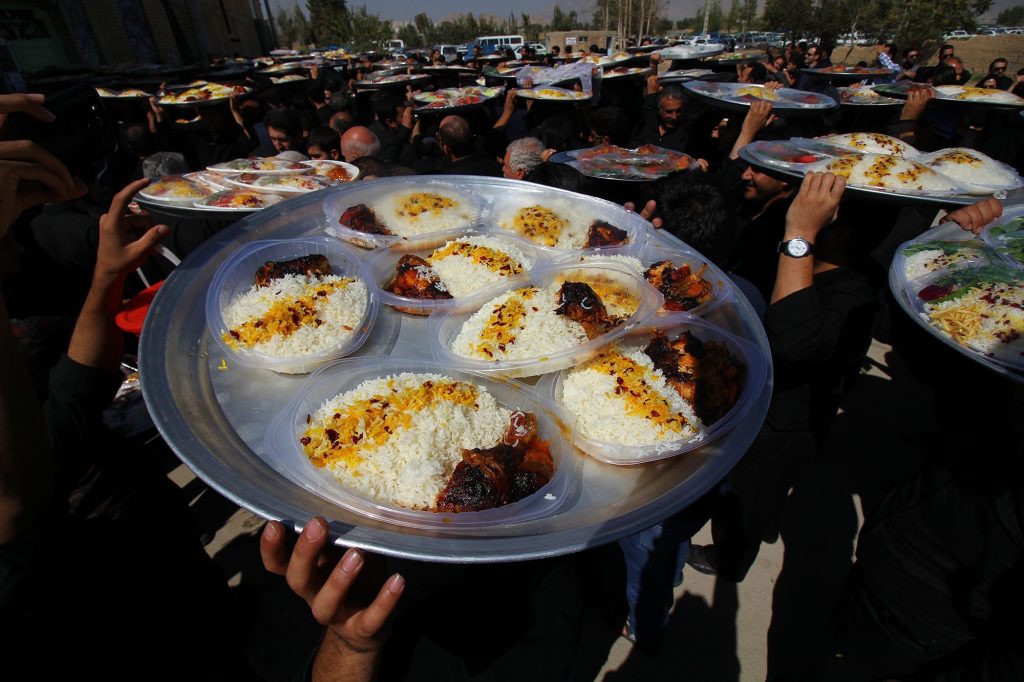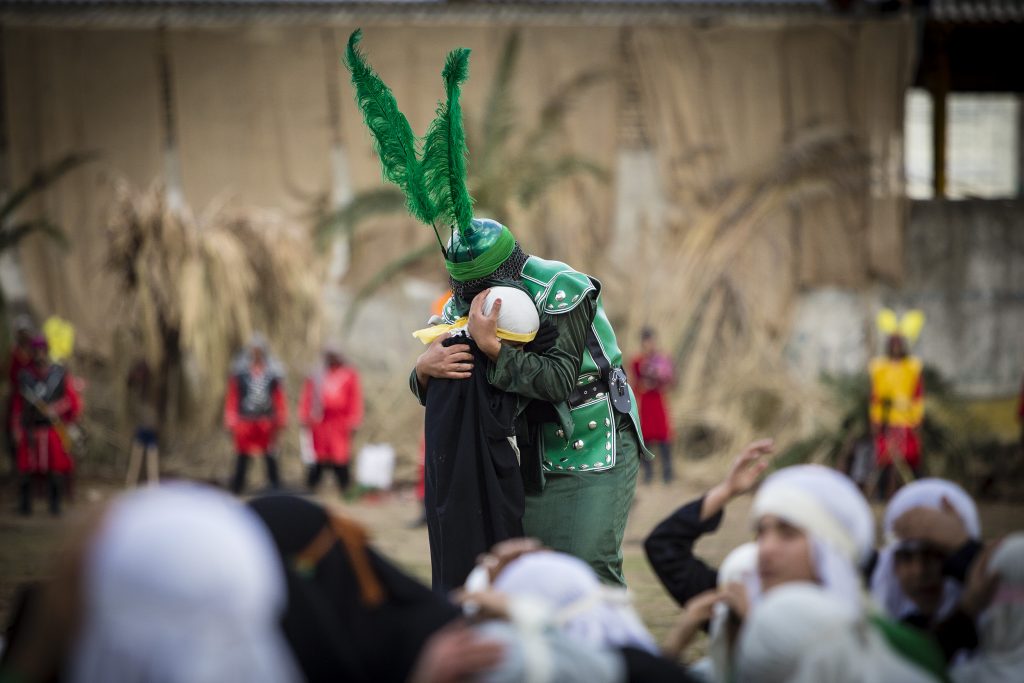Travel to Iran during Muharram and Ashura (considered the first month of the New Year in Arab countries). It is an opportunity to experience and see a special ceremony for Shiite Muslims in Iran Which has great cultural and ethnic appeal.
In the days of Muharram, the face of Iran’s big and small cities changed dramatically and became black. Women and men, young and old, dress in black and gather in mosques, passageways, and Tekyeh. These people mourn to express sympathy for those who were killed in the Karbala incident fourteen centuries ago.
Follow us to find out more about traveling to Iran during Muharram and Ashura.
First Decade of Muharram and The Story of Imam Hussein
The first decade of Muharram is the first to tenth days of the month of Muharram, the first month of the Islamic calendar (lunar calendar). The tenth day of Muharram is known as the Ashura. During these days, Shia Muslims mourn the death of Hossein (the Third Imam of the Shia) and his family. Shia people commemorate the martyrs of Karbala by prayer and abstinence from joyous events. “Hossein” was a grandson of the Islamic prophet Muhammad and his martyrdom was decisive in shaping Islamic and Shia history.
Shias begin mourning from the first night of Muharram and continue it for ten nights. The peak day of this mourning is known as the Day of Ashura. The last few days up until the Day of Ashura are the most important days because on these days Hossein and his family and followers (including women, children, and elderly people) were deprived of water, and finally, he and 72 of his followers were killed by the army of Yazid at the Battle of Karbala.
The Battle of Karbala was a war that took place on the tenth of Muharram. This battle happened between a small army of Hussein bin Ali (grandson of prophet Muhammad) and an army sent by Yazid (the second king of the Umayyad dynasty) near a place called Karbala. The reason for the war was that Hussain refused to pledge allegiance to Yazid. He left his hometown Medina and took refuge in Mecca. at that time, most people of Kufa sent letters to him, asked for his help, and pledged their allegiance to him so finally invited him to Kufa.
So, he decided to move towards Kufah with his family; but his caravan was intercepted by Yazid’s army in the Karbala desert. Yazid’s army attacked them and Imam Hussein was killed and beheaded along with most of his family and companions, including his six-month-old son. The remaining women and children were taken as prisoners and captured.
The Battle of Karbala took place on 10 October 680 in the lunar calendar. All of Hossein’s small army fought with a large army of Yazid, and all of them were killed near the river Euphrates, while they were thirsty; Because the enemy army did not allow them to use river water
Over history, many notable personalities and public figures, such as Nelson Mandela and Mahatma Gandhi, have cited Hossein’s stand against oppression and injustice as a great example of their fight against injustice.
Ashura in Iran
Shia around the world glorify the Ashura, an Islamic holy day that commemorates the martyrdom of Hossein and his family and followers at Karbala. On the days of Muharram, all the cities of Iran, from big cities to small towns and villages, become mournful and people congregate together in mosques for chest beating and mourning. They show their devotion to Imam Hossein by lamenting and chants of “Ya Hossein”.
Iranians commemorate Muharram every year because they believe Hussein has been martyred and oppressed. Iranians also believe that having the Ashura Movement memories alive promotes the doctrine of revolution and revolt against Autocratic governments, and nurtures the spirit of epic and sacrifice.
So, in this section of this Iran Travel Guide Center, we decided to talk about Local Muharram customs in Iran.
Nazri for Muharram Days

These days most people participate in special religious ceremonies and at the end of every ceremony, sponsors of the ceremony distribute food to participants and the poor people. This food is known as a pledge (Nazr) to Imam Hossein. Some people sacrifice a sheep in Ashura. Tourists who travel to Iran during Muharram and Ashura can see these ceremonies in everywhere.
Rawzeh (History of Karbala)
In holy ceremonies of Muharram, the clergymen retell the story of the Battle of Karbala and speak about the pain and sorrow endured by Hussein and his family. Also, Clergymen sing Sad songs about persecution, suffering, resistance, and martyrdom which is called Rawzeh. This ten-day period is a period of intense grief and mourning for religious Shia.
Ta’zieh (Religious Theater)
Another ceremony that tourists who travel to Iran during Muharram and Ashura will see is “Ta’zieh”. Ta’zieh in the conventional sense is a passion play, in which the events of Karbala are portrayed by individuals who each bear the role of the main characters.

The show is a traditional Iranian Shia religious play and is more about the killing of Imam Hussein and the sufferings of his family during the Karbala battle and after that. “Ta’zieh” was inscribed in 2010 on the Representative List of the Intangible Cultural Heritage (UNESCO). So, people who travel to Iran during Muharram and Ashura can see one of the events listed on the UNESCO Intangible Cultural Heritage.
Ta’zieh Ritual
In the above, we talked about the Ta’zieh as a part of Iranian religious culture and art; below is a list of places where you can experience Ta’zieh in Iran:
Tehran City
- Iranian Artists Forum (Khane Honarmandan Iran)
- Address: Honarmandan Park, Iranshahr St., Tehran City, Tehran Province, Iran
- Tekyeh Dar-Ghazi (Taziyeh Saray-E Kan)
- Address: Kan, Tehran City, Tehran Province, Iran
Kashan City
- Taziyeh Nooshabad
- Nooshabad, Kashan, Isfahan Province, Iran
Yazd City
- Amir Chakhmaq Complex
- Amir Chakhmaq Sq, Yazd City, Yazd Province, Iran
Baraghan City
- Hosseinieh Azam Baraghan
- Hosseinieh Azam, Baraghan, Savojbolagh County, Alborz Province, Iran
Sham-e Ghariban (The Night After Killing Hussein)
This Ritual refers to the evening of Ashura. On this night, Shias mourns for the martyrdom of Imam Hussein especially, the discomfort and tragedies that befell his family after the Karbala battle.
Some of the rituals that were accomplished on the evening of ‘Ashura include setting fire to symbolic tents, which represent the camp of Imam Hussein was burned by the enemies on that night after killing him. In these rituals, mourners light candles and recite eulogies (Rawzah) in memory of the events that happened.
Arba’een (Chehlom)
Arba’een is a Ritual Shia which is held forty days after the Day of Ashura. This day commemorates the martyrdom of Imam Hussain. Arba’een or forty days is the usual length of mourning after the death of a family member or loved one in Iran. Whereas Shia Iranians are very fond of Imam Hussein, they also, have Arba’een for Imam Hussein.
Visitors’ Manners Who Travel to Iran During Muharram
Commonly, there is no special limitation or condition for participating in this event. Although it’s better, for tourists to respect the Iranians, and avoid wearing bright or red and pink clothes, especially during the Day of Ashura.
Tourist Places During Ashura
In Ashura and a day before, all governmental offices, universities, sporting fields, bazaars, museums, and tourist sites are closed. Also, most hypermarkets and restaurants in Iran will be closed During Tasua (9th Muharram) and Ashura (10th Muharram).
Watching the Ashura Ceremonies in Iran
Different rituals and ceremonies are held during Muharram in Iran. These are an attractive option for Muharram tourism. Some of the ceremonies are as follows:
Nakhl Gardani is one of the most important Shia religious rituals of Muharram in Yazd. “Nakhl” is a wooden structure that is used as a symbolic representation of Imam Hussein’s coffin and Nakhl Gardani is the act of carrying the Nakhl (symbolic coffin) from one place to another place. This religious ritual honors the memory of the Imam’s funeral.
In Yazd, every village or city has its own Nakhl. These Nakhl are considered as a “symbol of social unity for a town, village, or district. The ritual is so common in Iran and other parts of the country people know about it or have the Nakhl in their community.
Tourists who travel to Iran during Muharram and Ashura can see this ritual in Yazd City and surroundings like Taft Imam Square.
Finally, can say, that experiencing Ashura rituals in Iran for those who travel to Iran during Muharram and Ashura can be an amazing way to find invaluable insights about Iranian culture, and understand the roots of popular culture; also, for photographers, it is the best situation to take amazing shoots!
So, if you decide to Travel to Iran during Muharram and Ashura, you can get the necessary information from Irantourism.




No comment